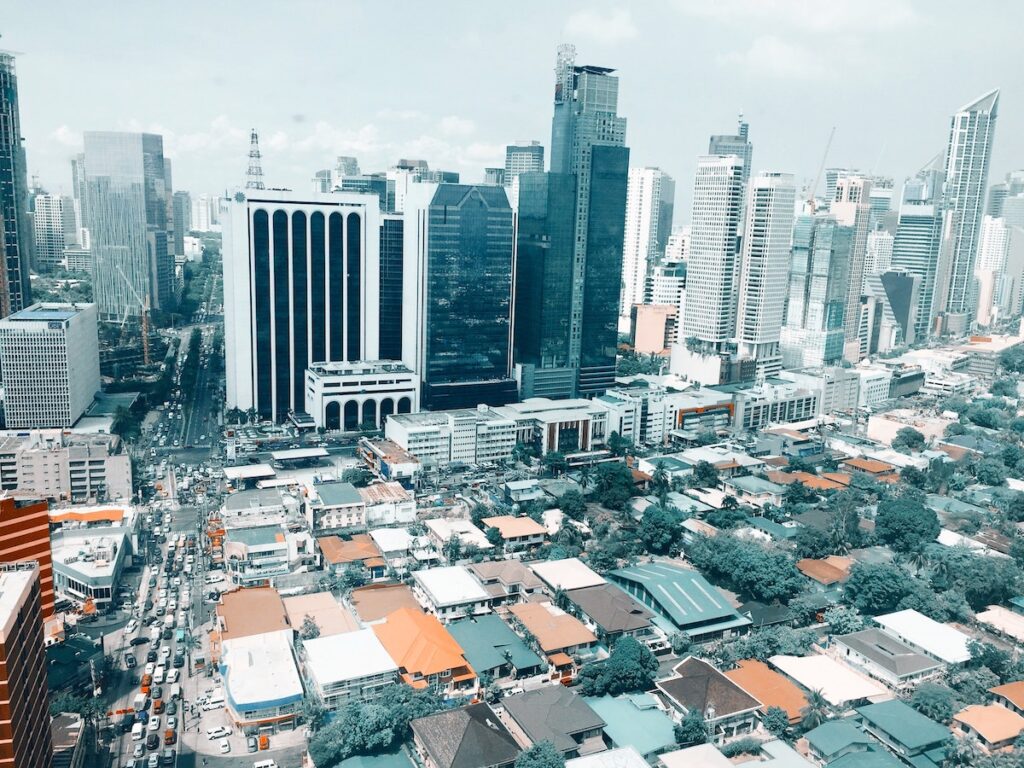Reasons to be optimistic about the Philippine economy over the medium-term
Blogs
January 9, 2023

Given the current political climate in the country and how the ongoing COVID-19 pandemic continues to affect the economy, most observers would probably have an overly pessimistic view about the future of the Philippine economy. However, one should realize that with the country’s sound macroeconomic fundamentals, diverse economic landscape, and increasingly robust economic policies, it’s not too hard to imagine a rosier future.
In this short piece, we’ll discuss five good reasons to be optimistic about the country’s economic prospects over the medium-term and why Filipinos should look forward to the next 5 to 10 years.
The Philippine economy has begun rebounding from COVID-19
There’s no disputing how difficult the COVID-19 pandemic has been for Filipinos. The world’s top think tanks have even projected lower long-term growth forecasts for the country as a result of the serious economic impact the health crisis has had on the country. Nevertheless, Oxford Economics still believes that the Philippines will be one of the fastest-growing economies among its peers. Moreover, the Asian Development Bank’s (ADB) Asian Development Outlook pegs Philippine economic growth to hit 5.5% in 2022, while the International Monetary Fund’s (IMF) August 2021 country report estimates GDP growth of 7% in the same year.
These numbers indicate that the Philippine economy has begun its medium-term rebound. Initiatives like a strengthened vaccination program to protect Filipino workers, as well as more expansive labor market programs to restore lost productivity, will likely further improve these medium-term economic gains.
The Philippines continues its push for more infrastructure spending
Another positive contributor to the Philippines’ medium-term economic prospects is its push toward more infrastructure investments. The public sector hasn’t dropped the ball in its commitment to build more extensive public works and transportation facilities. Neither has the private sector in its commitment to invest in key infrastructure such as water systems, and modern-day necessities like digital infrastructure for telecommunications.
Mobility, connectivity, and public health and safety are all drivers of healthy economic activity. The infrastructure developments that are due to be completed in the next 10 years will sustain both the medium-term and the long-term economic growth of the country.
The Philippines’ fiscal policies are supportive of growth
The prudent and conservative fiscal management of the Philippine government, guided by frameworks like the Development Budget Coordination Committee’s (DBCC) Medium-Term Fiscal Program (MTFP), has also contributed to the nation’s positive medium-term outlook. The DBCC has reported increased revenue collections from the Bureau of Internal Revenue (BIR) and Bureau of Customs (BoC); the PHP 2.85 trillion collected in 2020 accounts for as much as 15.7% of the country’s GDP. In addition, the government has overseen the successful rollout of legislations like the Bayanihan Acts I and II and the CREATE tax reform law, which accelerated the reduction of tax rates for corporate income.
This fiscal discipline will ultimately prove beneficial in the country’s economic recovery efforts. Our medium-term prospects will even be better if the Philippine government bolsters its efforts to mobilize revenue.
The Philippines’ information technology, financial, and public administration sectors have gained strength
Yet another contributing factor to our country’s positive medium-term outlook is its modernization. The information technology (IT), financial, and public administration sectors, in particular, have evolved to meet the needs of Filipinos, and they will continue to have a strong showing in the nation’s economic growth.
We are looking forward to the imminent large-scale digitalization of public services such as the national ID system. Initiatives like the national ID rollout will result in an up-to-date census of Filipino families, as well as the timely distribution of social assistance like cash aid. The successes of the IT, public administration, and financial sector will uplift the conditions of poorer Filipinos and, more importantly, allow them to participate in the growth of the national economy.
The Philippines has an active export economy
Lastly, the industrial export sector looks to be a powerful contributor to the Philippines’ medium-term economy. The country’s strong suits—such as capital goods exports for manufacturing activities abroad—have continued to drive the medium-term economy upwards.
In addition, more activity is happening outside of the country’s traditional industrial center, which is the National Capital Region. Aboitiz InfraCapital has made investments in projects that help facilitate international trade, while stimulating the domestic economy. These include investments in economic estates with manufacturing, shipbuilding, or logistics facilities such as the LIMA Estate in Batangas and the Mactan Economic Zone 2 Estate and West Cebu Estate in Cebu. Very soon, these areas will become even bigger players in the Philippines’ export sector.
Aboitiz InfraCapital: helping improve the economic prospects of the Philippines
These developments notwithstanding, the Philippines still has a long way to go. The country will only be able to realize its full medium-term potential if it can ramp up efforts for the healthcare sector, further improve the delivery of d social services, and further improve its fiscal and economic policies.
Aboitiz InfraCapital and its Business Units will maintain an outlook of cautious optimism while strengthening our existing partnerships with government and non-government entities for the Philippines’ medium-term growth. Through our investments in the economic estates, as well as our projects for the water, digital infrastructure, and transport and mobility sectors, we hope to do our part to further strengthen the Philippine economy.


























